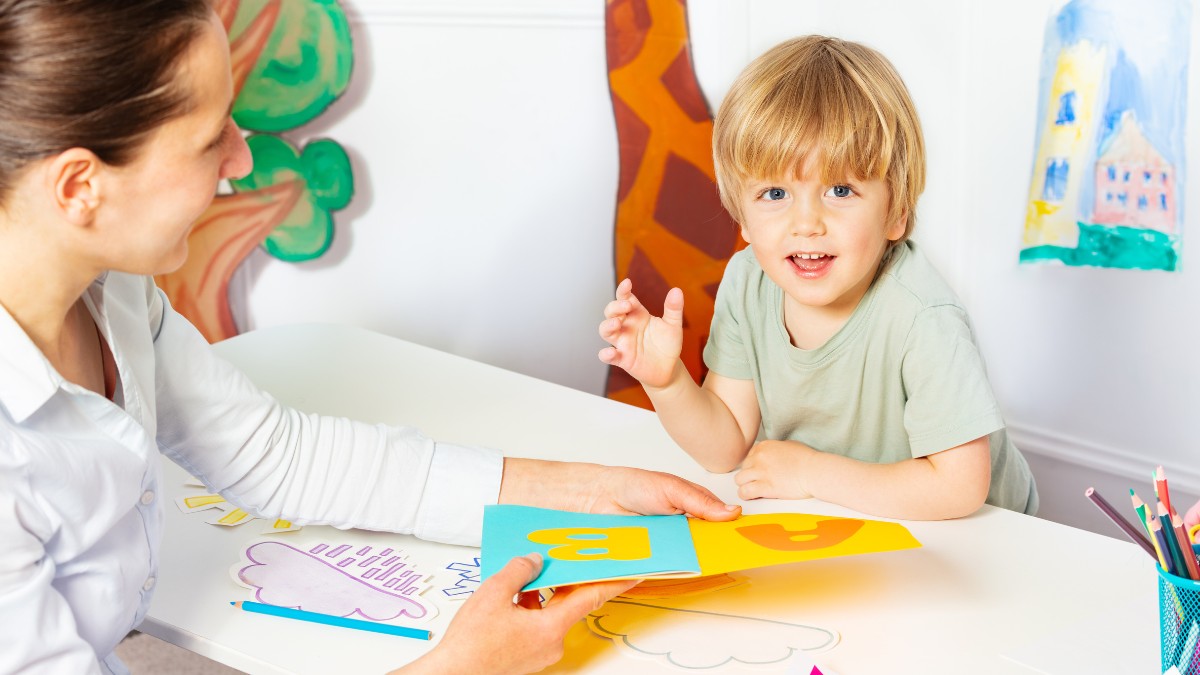Teaching reciprocal conversation for individuals with autism involves helping them develop the skills necessary for engaging in meaningful, two-way communication. This process focuses on fostering the ability to take turns, maintain appropriate eye contact, understand nonverbal cues, and respond appropriately in social interactions.
Through structured practice and support, individuals with autism can improve their social communication, building stronger connections with peers and others around them. Effective teaching methods include using visual supports, role-playing, and social stories to create a comfortable and predictable learning environment that encourages reciprocal exchanges.
Understanding Reciprocal Conversation for Autism
Research indicates that approximately 1 in 36 children in the United States is diagnosed with autism spectrum disorder (ASD). Many of these children struggle with reciprocal conversation, a key component of effective communication.
Reciprocal conversation refers to the ability to engage in a back-and-forth dialogue that includes taking turns, listening, and responding appropriately. For children with autism, mastering this skill can open doors to improved relationships, self-expression, and social integration.
What is Reciprocal Conversation in Autism?
Reciprocal conversation involves two or more people exchanging thoughts, questions, or comments in a balanced manner. For individuals with autism, this skill may be challenging due to difficulties in understanding social cues, maintaining attention, or interpreting nonverbal communication.
Teaching reciprocal conversation for autism involves structured approaches to build foundational skills such as active listening, turn-taking, and topic maintenance. These methods help children become more confident communicators, making everyday interactions more meaningful.
Why Is It Important?
Developing reciprocal conversation skills enhances a child’s ability to:
- Build and maintain friendships.
- Express their needs and preferences effectively.
- Navigate social situations with confidence.
When tailored to an individual’s needs, these skills can significantly improve their quality of life.

How Can You Teach Reciprocal Conversation Skills?
Teaching reciprocal conversation for children with autism requires a systematic, patient, and individualized approach. Here are some effective strategies:
Start with Modeling and Role-Playing
Modeling is one of the most effective ways to teach reciprocal communication. Caregivers, teachers, or therapists demonstrate conversational exchanges that children can observe and imitate. Role-playing expands on this by providing safe, low-pressure opportunities to practice these skills.
For example, pretend to be at a store and practice a scripted conversation about purchasing an item. This builds familiarity with common phrases, turn-taking, and appropriate responses.
Use Visual Aids and Prompts
Visual supports can help children with autism understand the flow of a conversation and provide cues for participation. These aids might include conversation boards, charts, or even apps.
Common tools include visual conversation starters (e.g., picture cards), “first, then” charts for turn-taking, and emojis or expression cards for understanding emotional responses. These tools make abstract concepts more concrete, aiding comprehension and reducing anxiety.
Reinforce Positive Behavior
Natural reinforcement—rewarding desired behaviors with meaningful outcomes—encourages children to continue practicing conversational skills.
Reinforcements include praise (e.g., “Great job asking me about my day!”), tangible rewards like stickers or tokens, and access to preferred activities. Consistency is key to building and maintaining motivation.
Focus on Specific Skills
Breaking down reciprocal conversation into manageable components makes it less overwhelming. Key areas to target include:
- Initiating conversations: Teach children to start with simple greetings or questions.
- Maintaining topics: Help them learn to stay on topic and ask follow-up questions.
- Ending conversations politely: Practice closing interactions in a friendly and clear manner.
Gradually increasing the complexity of these skills ensures steady progress.
Practice in Natural Settings
Real-life practice solidifies learning. Encourage children to use their conversational skills during playdates, at school, or in community settings.
Example activities include ordering food at a restaurant, talking to peers during recess, and asking for help in a store. These opportunities build confidence and adaptability.
Leverage ABA Therapy
Applied Behavior Analysis (ABA) is a proven method for teaching social and communication skills, including reciprocal conversation. ABA therapy breaks down complex behaviors into smaller, teachable steps. Therapists use data-driven techniques to monitor progress and adjust interventions as needed.
Key ABA techniques for reciprocal conversation include discrete trial training (DTT) for focused skill-building, natural environment teaching (NET) for real-world application, and social stories to illustrate appropriate conversational behaviors.
Common Challenges and How to Overcome Them
Limited Motivation
Children with autism may not naturally see the value in reciprocal conversation. To address this, identify their interests and integrate them into practice sessions.
Example: If a child loves dinosaurs, practice conversational turns by discussing their favorite species.
Difficulty with Abstract Concepts
Abstract ideas like empathy or subtle social cues can be hard to grasp. Using concrete examples and visual aids helps bridge this gap.
Example: Use a “feelings chart” to match facial expressions with emotions.
Generalization Across Settings
Children may excel in therapy but struggle to apply skills elsewhere. To promote generalization:
- Provide consistent opportunities for practice.
- Engage multiple caregivers or peers.
- Gradually reduce prompts and supports.

How Can Parents Support Reciprocal Conversation at Home?
Parents play a crucial role in reinforcing these skills. Here are some practical tips:
- Encourage daily conversations: Dedicate time for back-and-forth discussions about school, hobbies, or family activities.
- Provide gentle prompts: If your child struggles to respond, offer hints or rephrase the question.
- Celebrate progress: Acknowledge even small achievements to build confidence.
Consistency and patience are vital in creating a supportive learning environment.
Empowering Your Child with Beyond Care Therapy
Teaching reciprocal conversation for autism is a journey that requires expertise, dedication, and individualized support. At Beyond Care Therapy, we specialize in ABA therapy to help children with autism develop meaningful communication skills.
Our experienced therapists in Utah, Texas, Arizona, and Massachusetts use evidence-based strategies tailored to your child’s unique needs. By focusing on reciprocal conversation, we aim to build confidence, foster social connections, and improve quality of life.
Ready to get started? Contact us today to learn more about our services and how we can help your child thrive!

